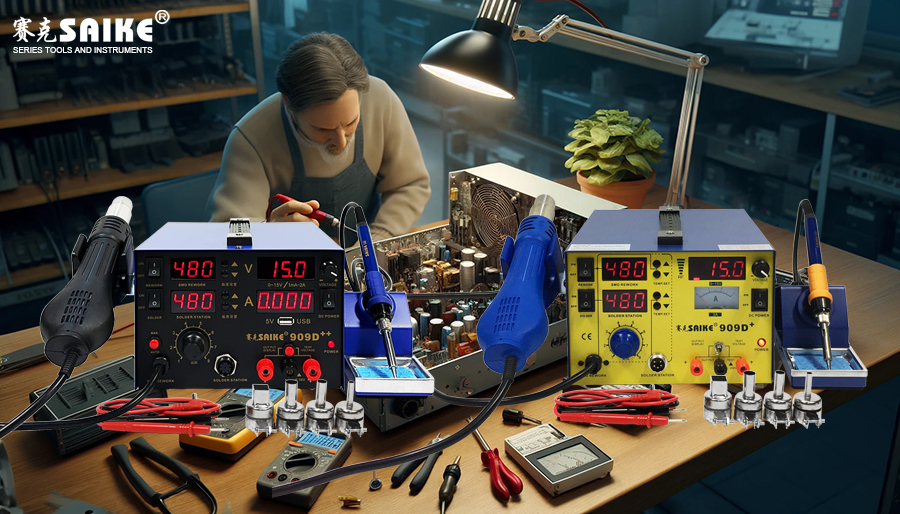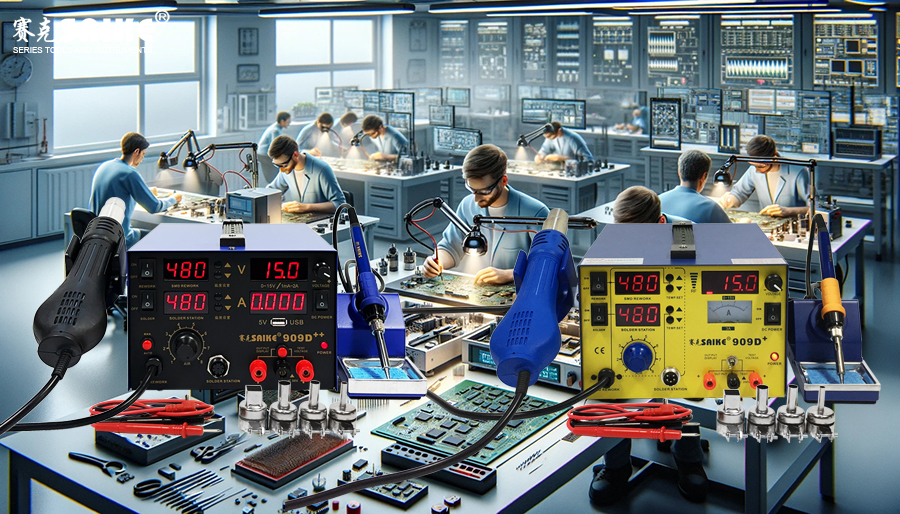
SK-YJ000RFSHY-KP 100042
The DC regulated power supply plays a crucial role in electronic equipment. To ensure its normal operation and extend its service life, regular inspection and maintenance of internal components are essential. This article will introduce the inspection and maintenance methods of internal components in DC regulated power supplies in detail.
I. Basic Composition and Working Principle of DC Regulated Power Supplies
1.Basic Composition
Dc regulated power supply usually consists of the following main components:
– Transformer: Used to transform AC voltage into the desired AC voltage.
– Rectifier circuit: Converts AC voltage into pulsating DC voltage.
– Filter circuit: Smoothes the pulsating DC voltage and reduces ripple.
– Voltage regulator circuit: Provides a stable DC output voltage.
– Protection circuit: Protects the power supply and load from damage caused by overcurrent, overvoltage, etc.
2.Working Principle:
– Transformer: The input AC voltage adjusts the voltage amplitude through the transformer.
– Rectifier circuit: The transformed AC current is converted into pulsating DC current through rectifying diodes.
– Filter circuit: Components such as filter capacitors and smoothing inductors smooth the pulsating DC.
– Voltage regulator circuit: Keeps the output voltage constant through voltage regulator devices (such as zener diodes or integrated voltage regulators).
– Protection circuit: Uses protective elements such as fuses and thermistors to prevent abnormalities.
II. The Importance of Inspection and Maintenance
1.Preventive Measures:
– Early problem detection: Through regular inspections, potential failures can be identified early, preventing sudden equipment failures.
– Extending service life: Promptly handling aging and damaged components extends the overall lifespan of the power supply.
2.Improving Performance:
– Maintaining stable output: Regular maintenance ensures stable power output and reduces voltage fluctuations.
– Reducing noise and interference: Cleaning and replacing aging components can help reduce power supply noise and electromagnetic interference.
III. Inspection Methods for Internal Components
1.Visual Inspection:
– Appearance inspection: Check for obvious physical damage to components, such as burning or deformation.
– Solder joint inspection: Inspect solder joints for cracks or cold solder joints.
2.Electrical Testing:
– Capacitor testing: Use a capacitance meter to test the capacitance and ESR values of the filter capacitors to determine if they are aging or failing.
– Diode testing: Use a multimeter’s diode range to test the forward and reverse resistance of the rectifier diodes to determine their working status.
– Voltage regulator testing: Measure the input and output voltages of the voltage regulator circuit to ensure the voltage regulator is working properly.
3.Functional Testing:
– Load testing: Connect an appropriate load to test the stability and output voltage of the power supply under different load conditions.
– Waveform testing: Use an oscilloscope to observe the waveform of the output voltage to detect any abnormal ripples or noise.
IV. Maintenance Methods for Internal Components
1.Cleaning:
– Dust removal: Use compressed air or a soft brush to remove dust inside the power supply to prevent short circuits or poor heat dissipation caused by dust accumulation.
– Contact cleaning: Use contact cleaner to clean connectors and contacts to ensure good contact.
2.Replacing Aging Components:
– Capacitor replacement: Timely replace aging or degraded capacitors based on their working status.
– Diode replacement: If leakage or damage is found in the rectifier diodes, they should be replaced promptly.
3.Lubrication and Fastening:
– Fan lubrication: Regularly lubricate the fan bearings of power supplies with fans to ensure heat dissipation effectiveness.
– Screw tightening: Check and tighten the screws inside the power supply to prevent poor contact or mechanical damage due to looseness.
V. Summary
The inspection and maintenance of DC regulated power supplies are crucial measures to ensure their stable operation and extend their service life. Through regular visual inspections, electrical testing, and functional testing, potential problems can be identified and addressed early. Simultaneously, regular cleaning, replacement of aging components, and proper lubrication and fastening operations can effectively improve the performance and reliability of the power supply. Following the aforementioned methods for inspection and maintenance will help ensure the efficient operation of DC regulated power supplies in various applications.


